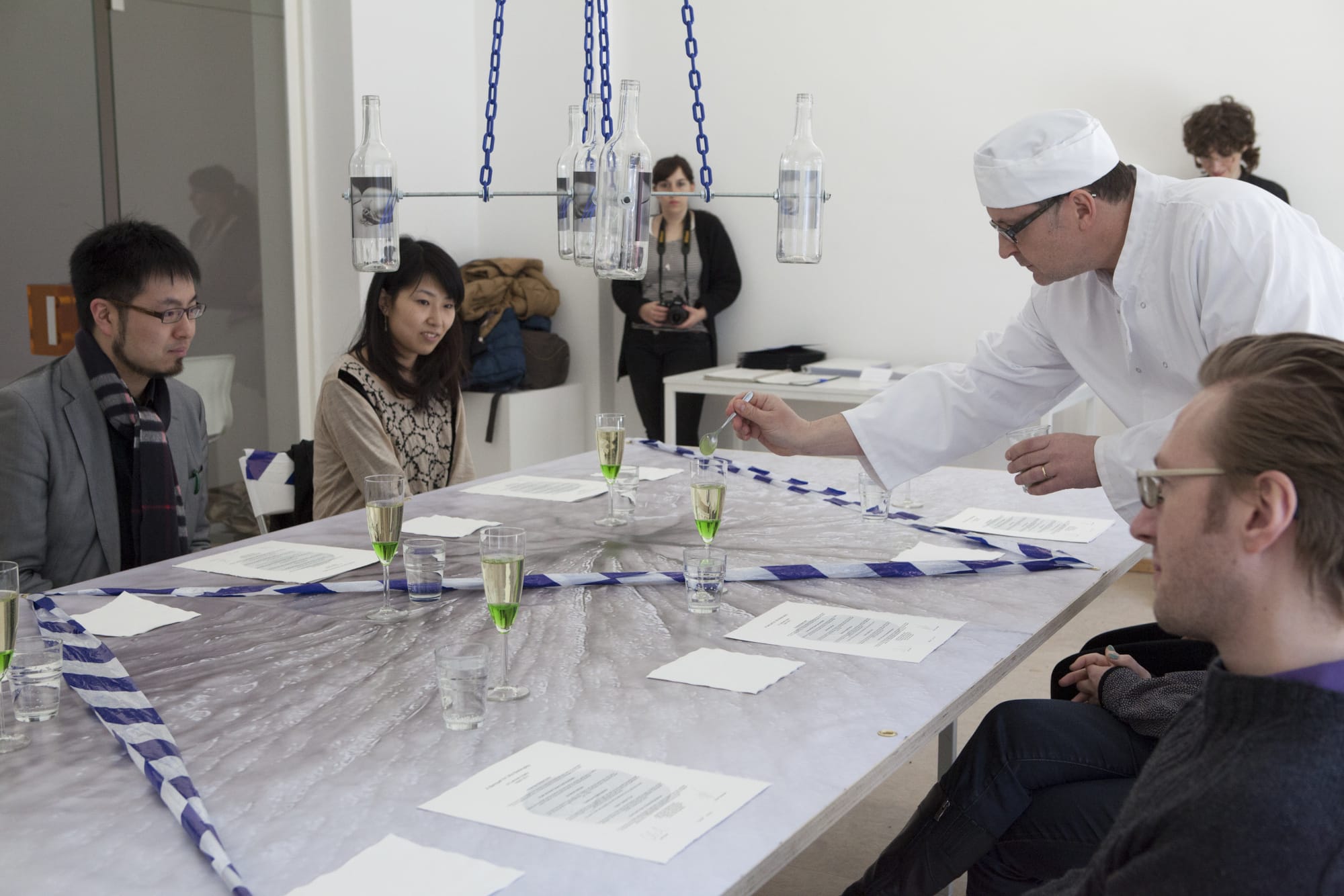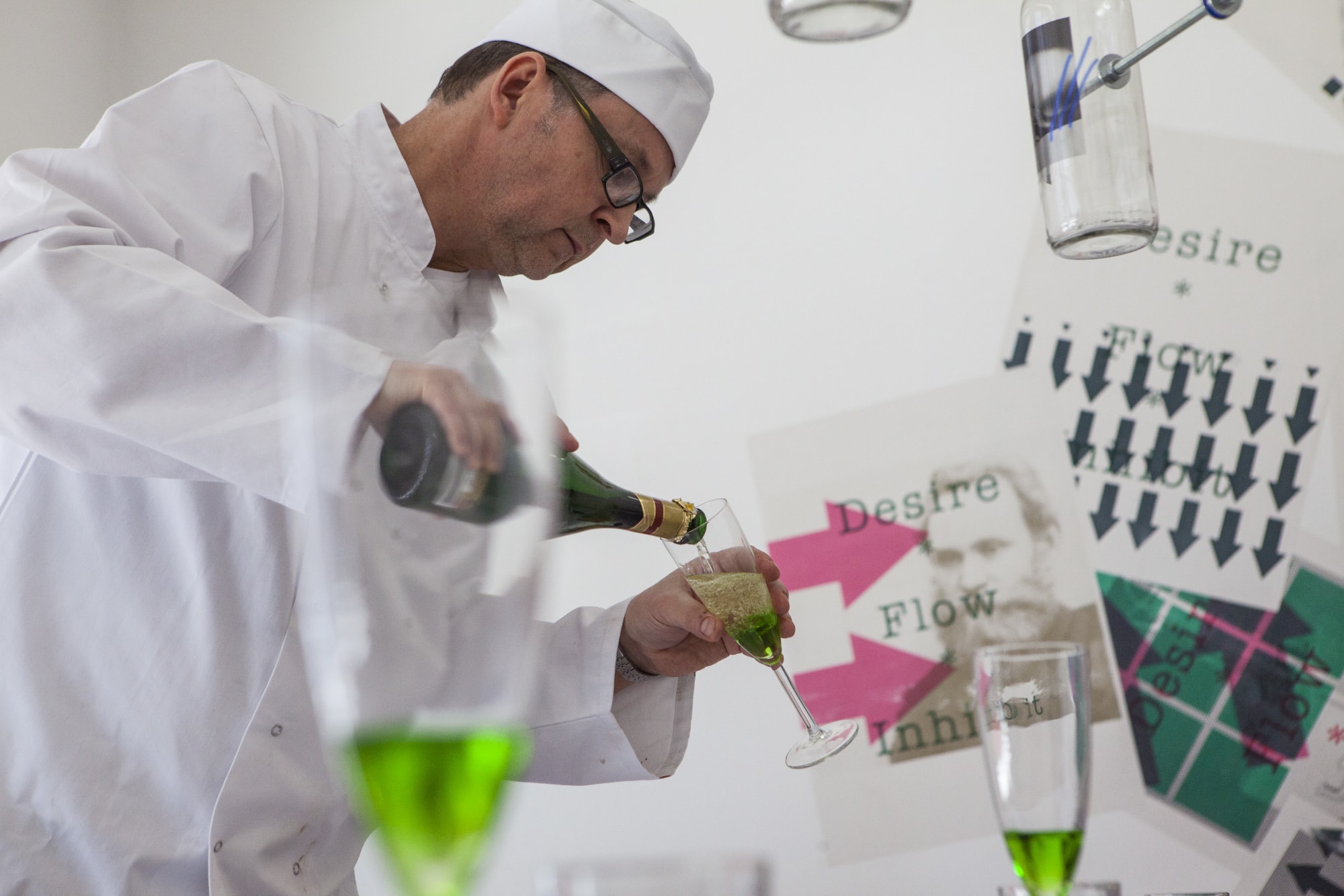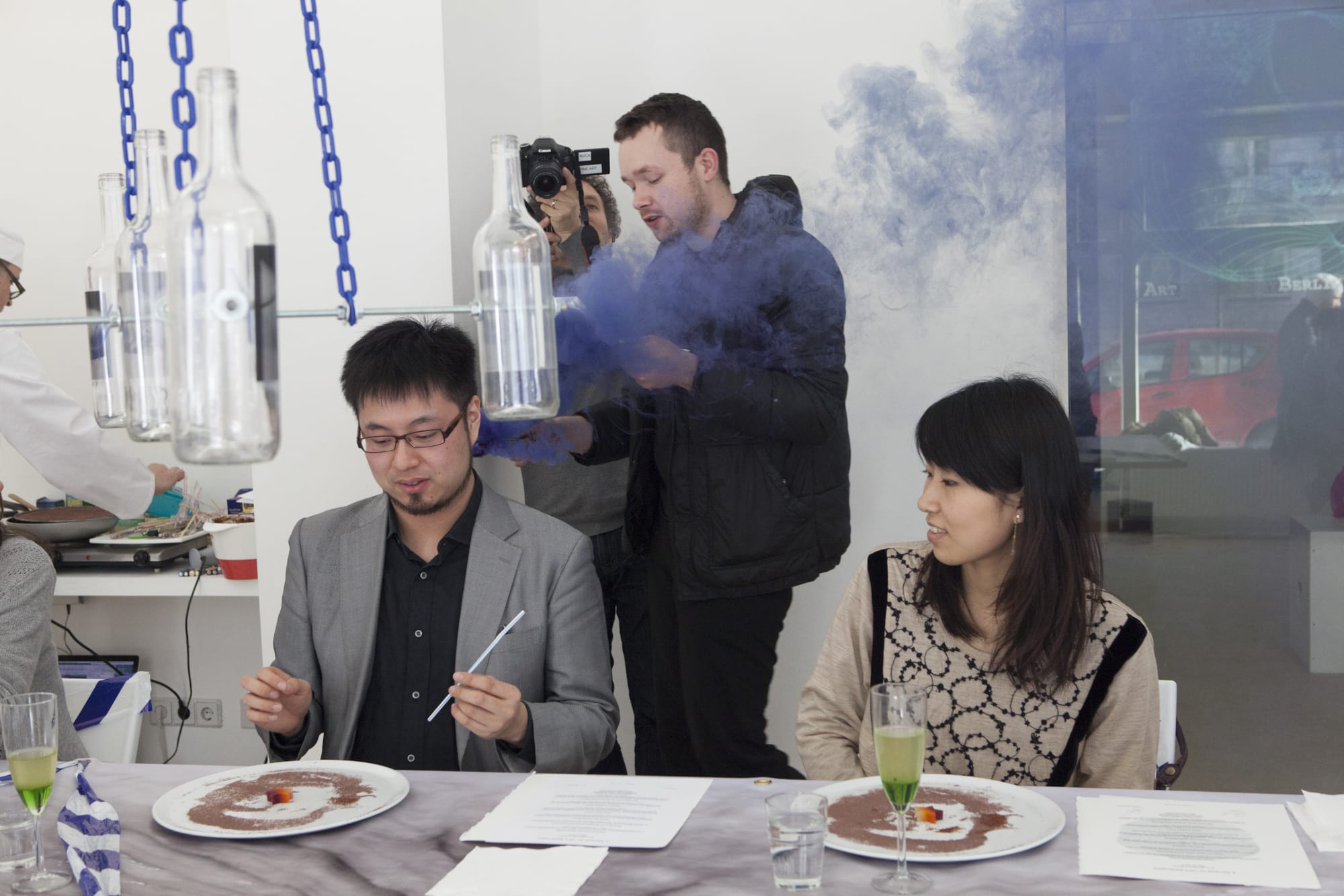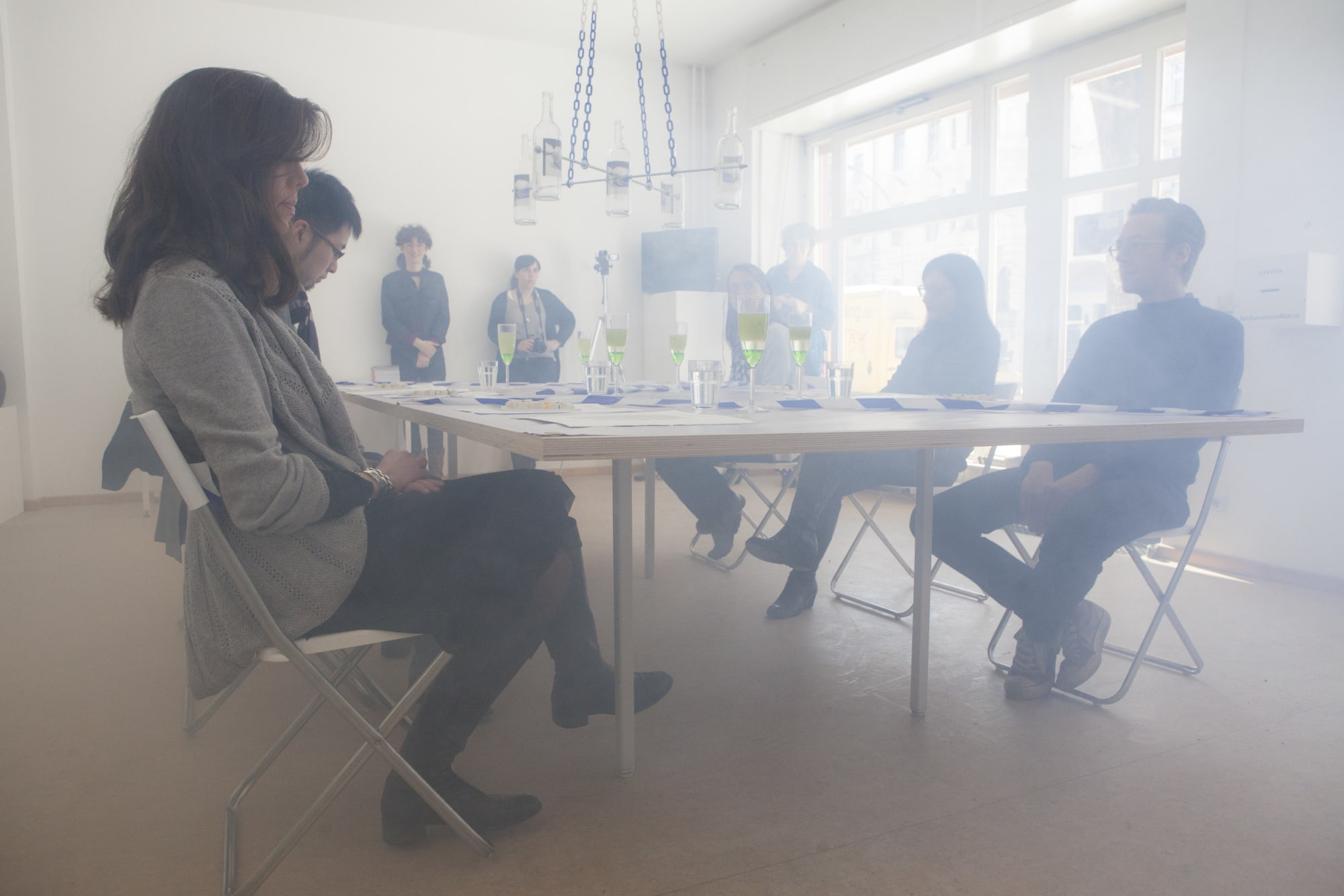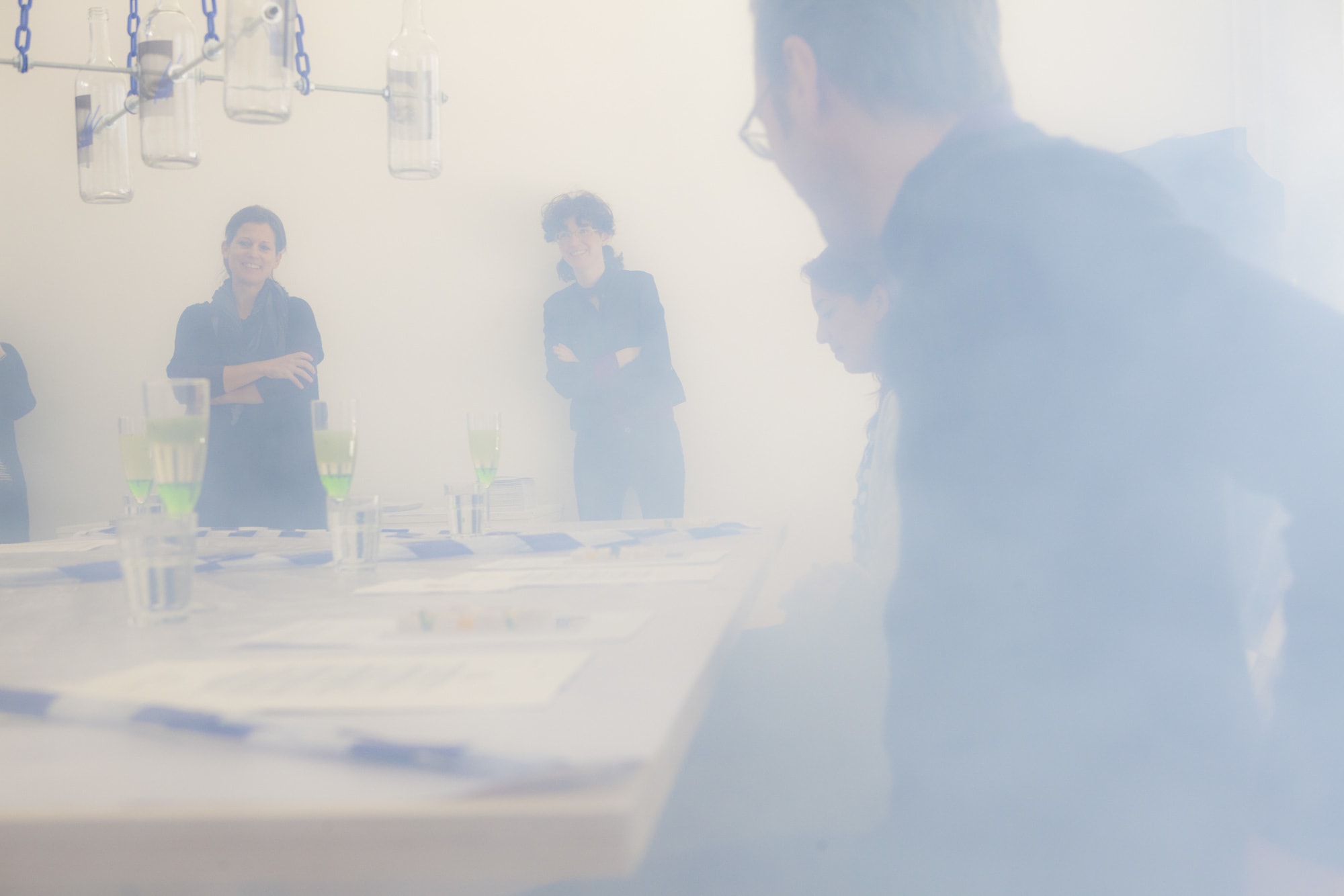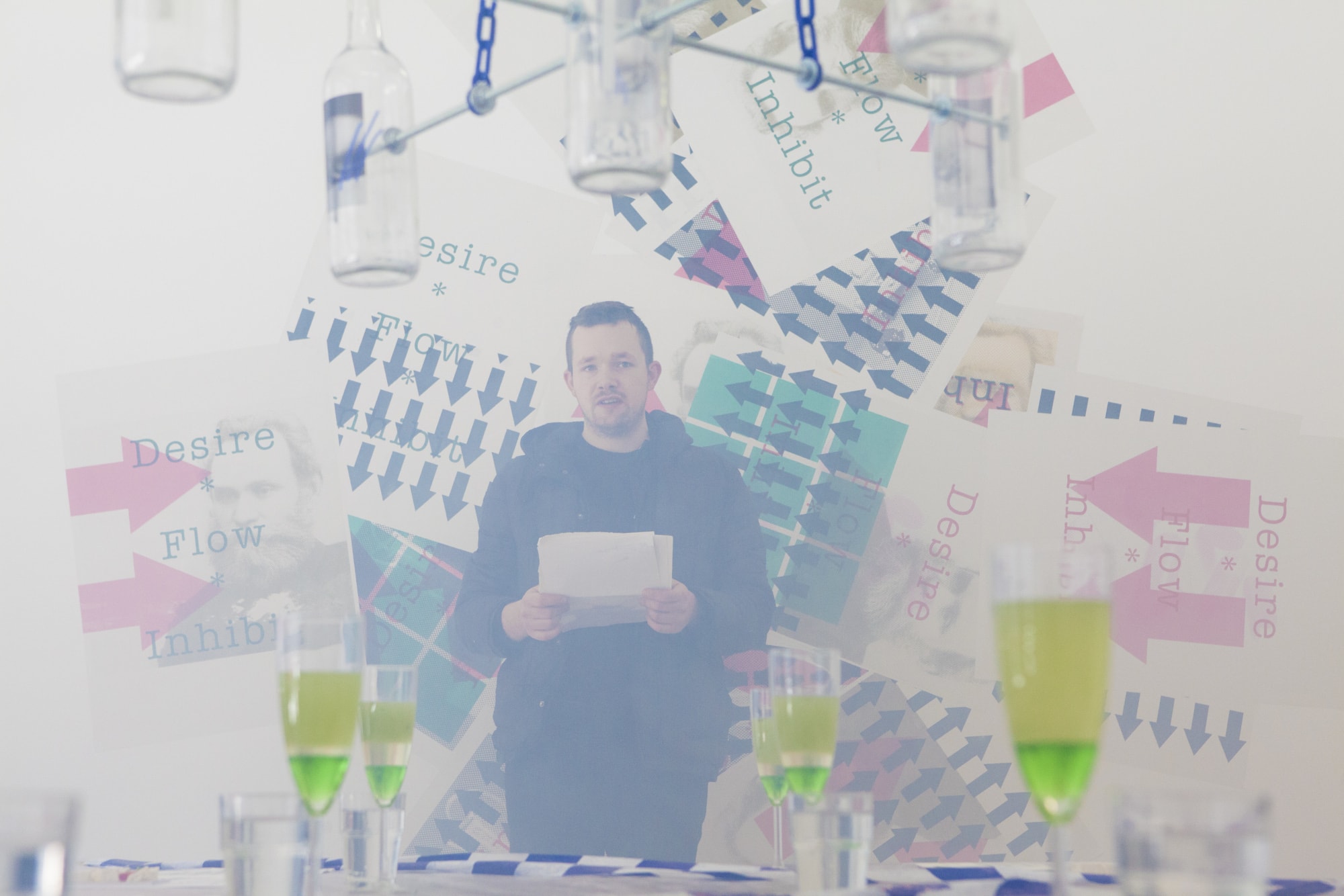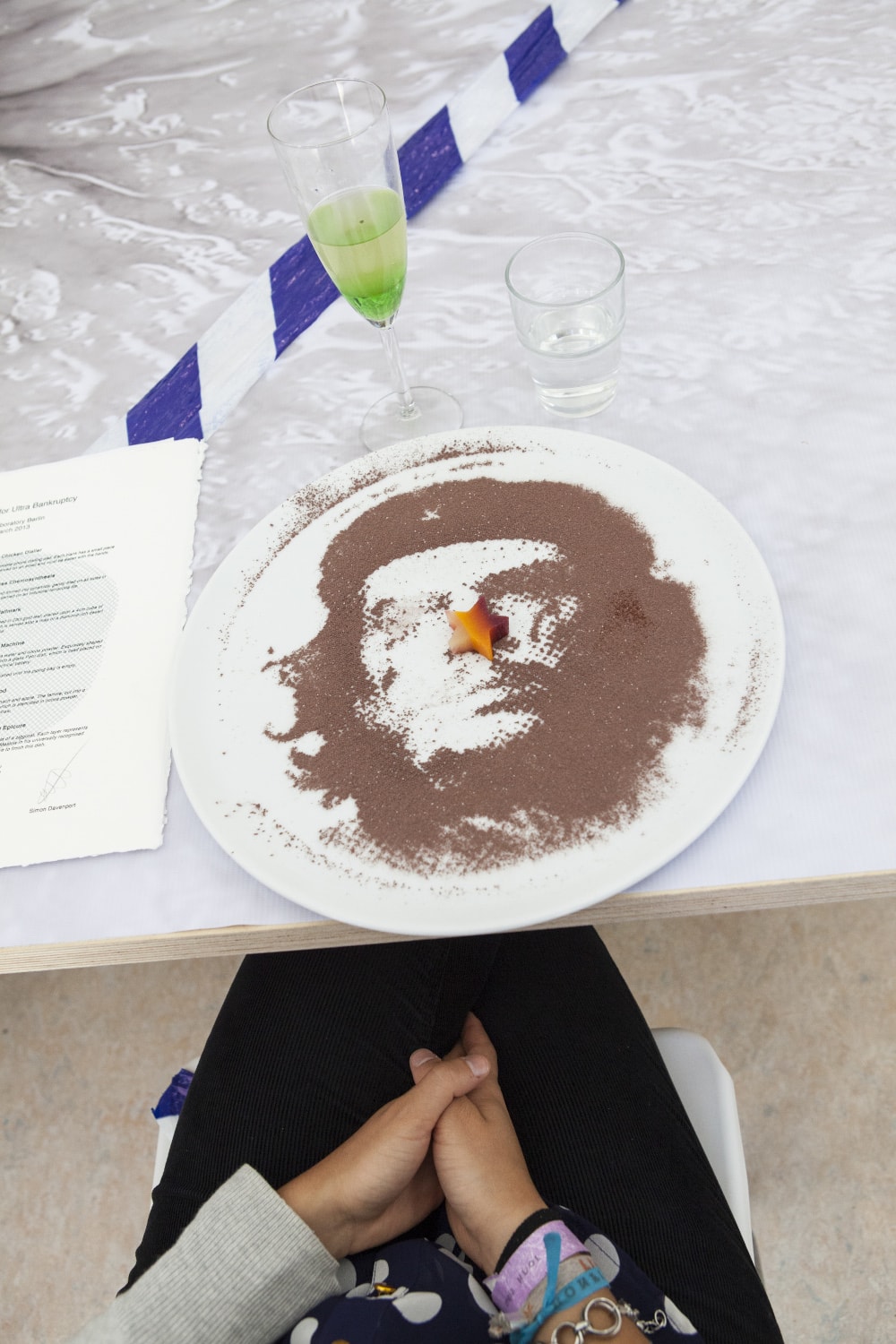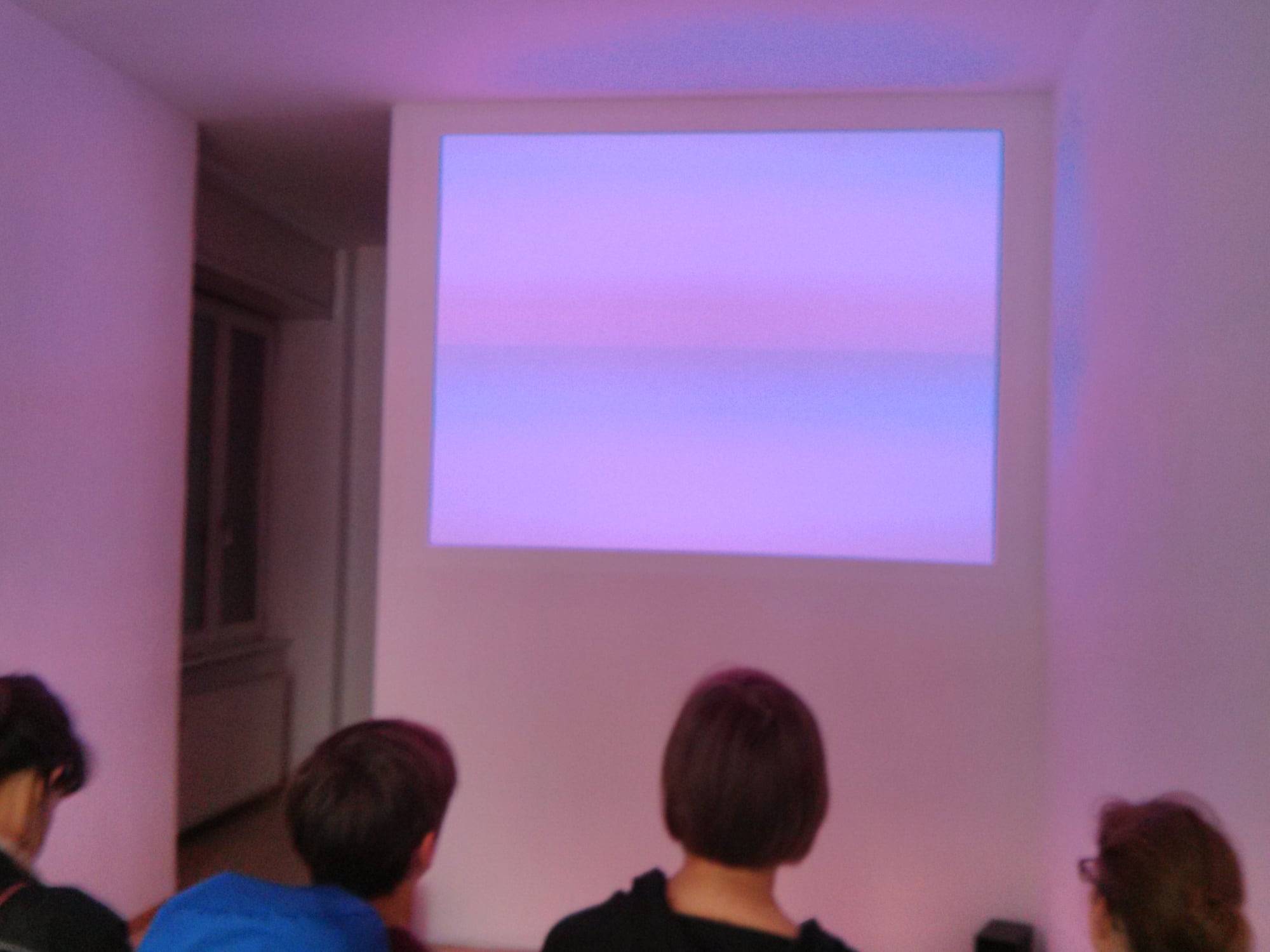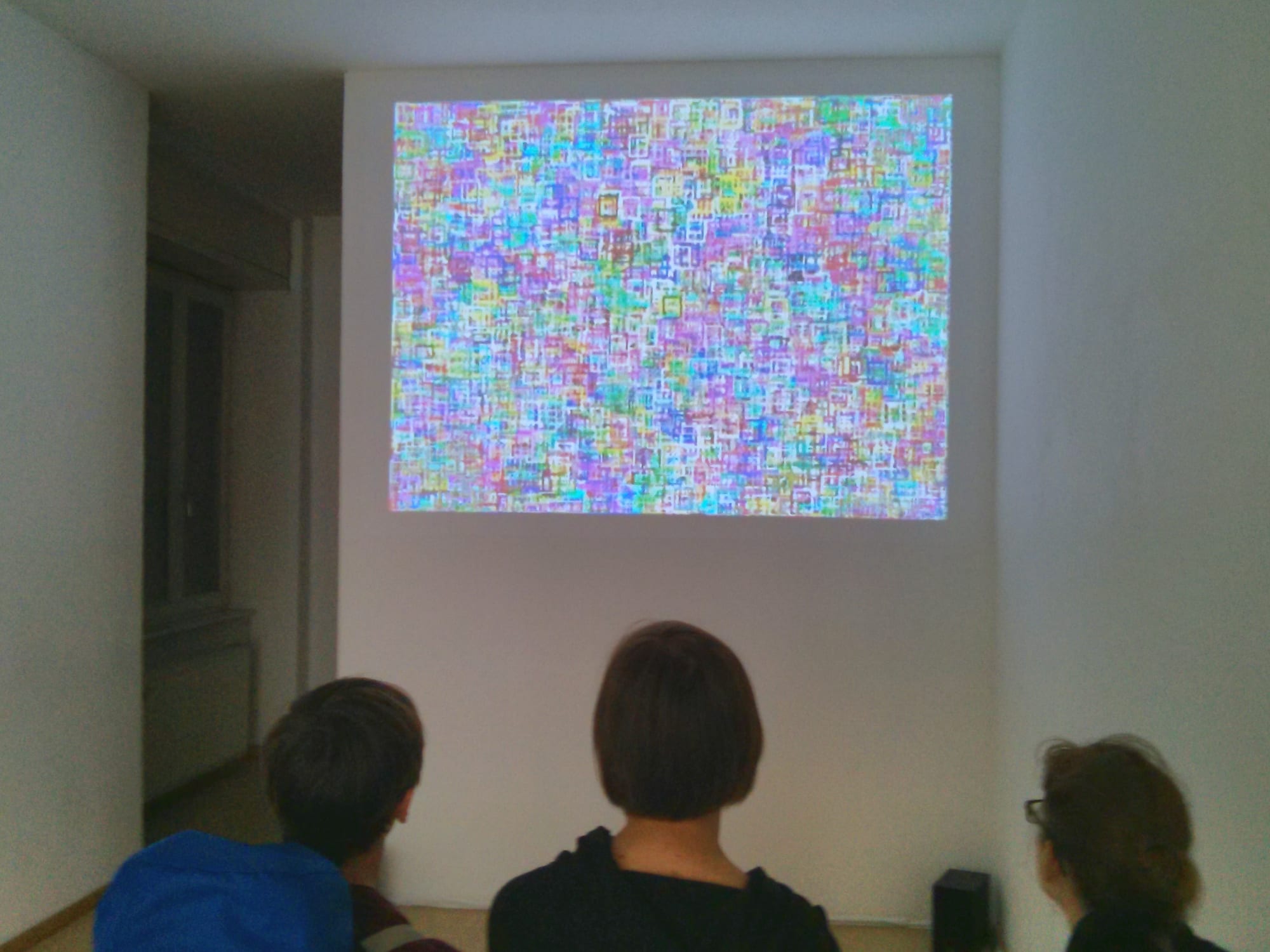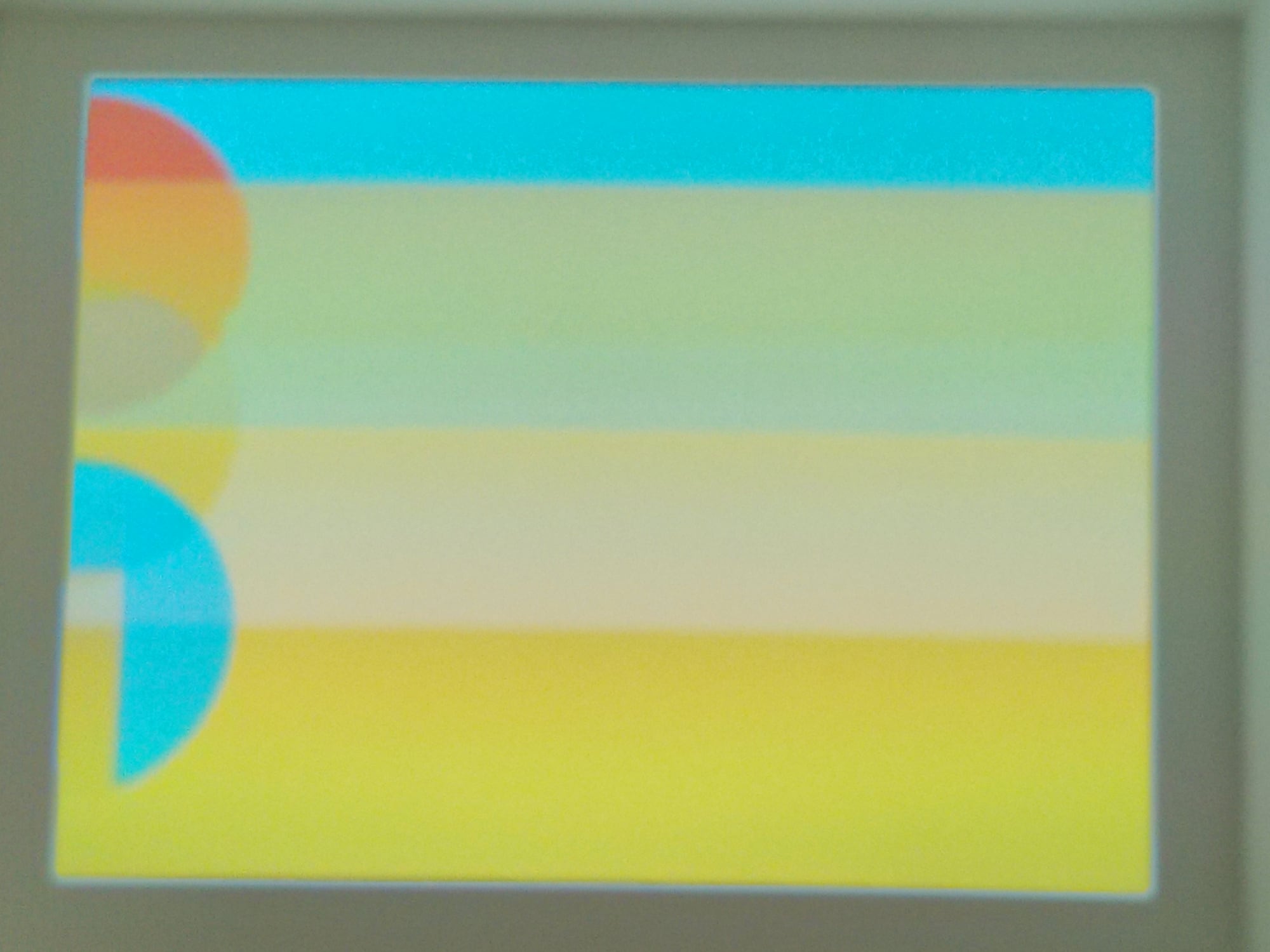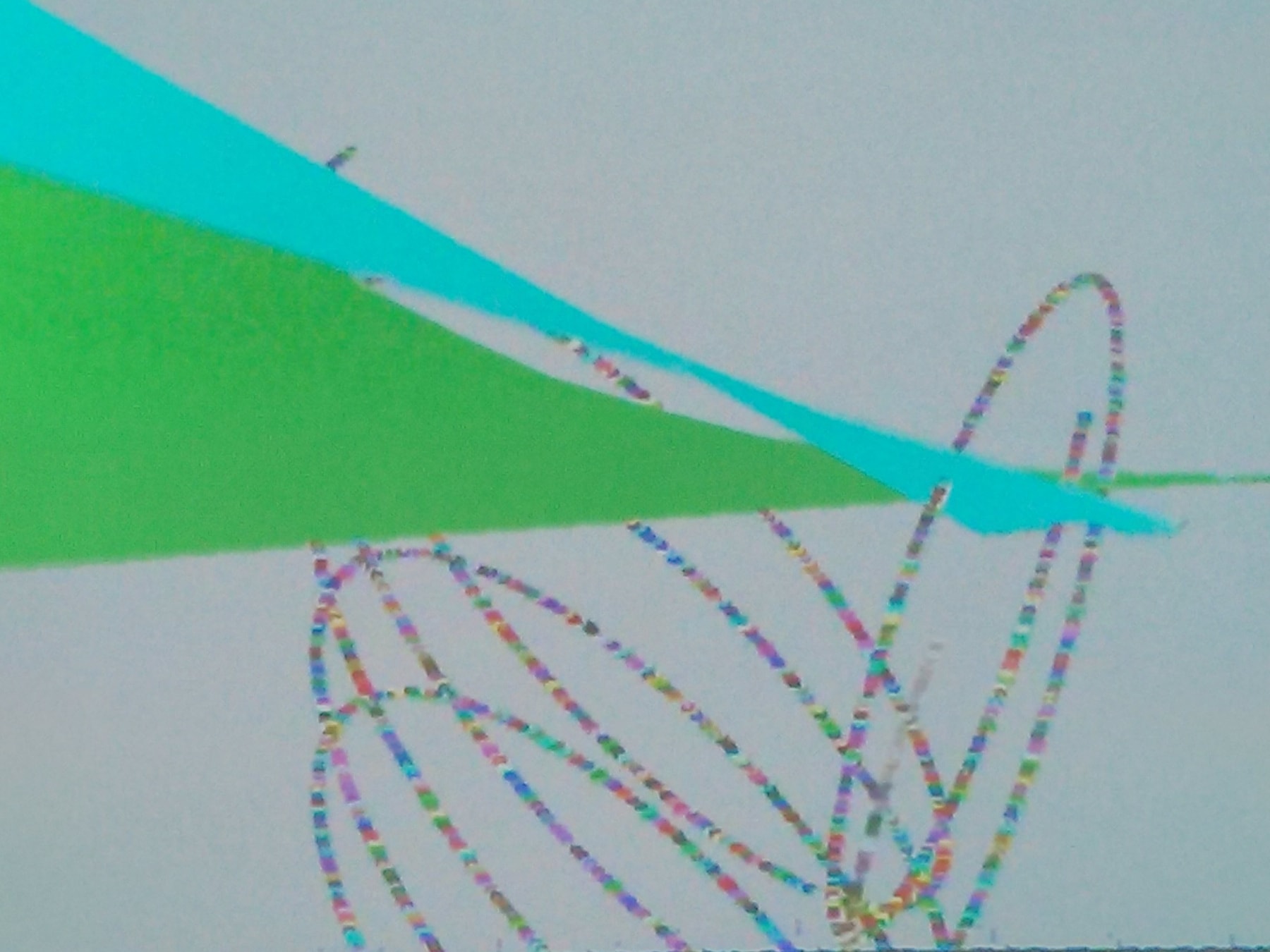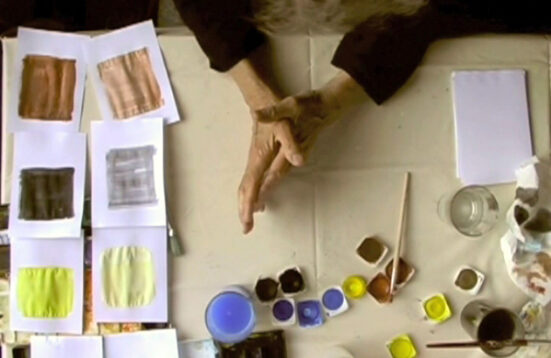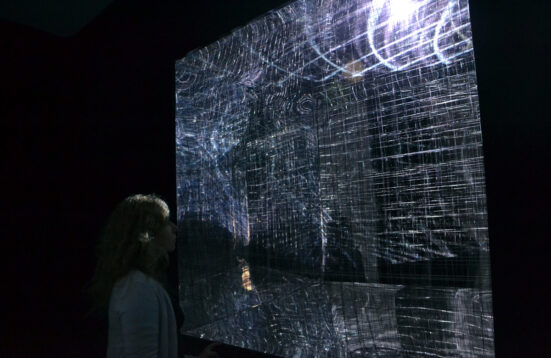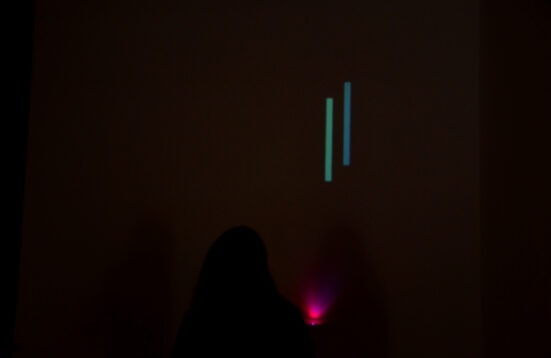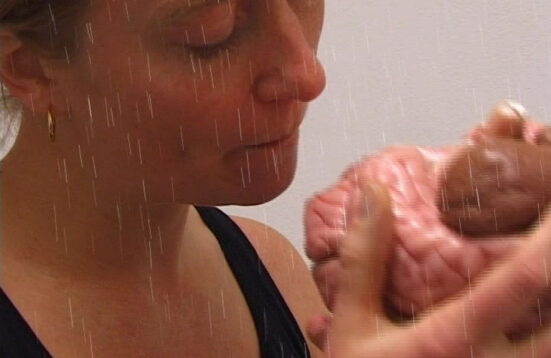Synaesthesia / 3
History of the Senses
Carl Rowe & Simon Davenport | Sergio Maltagliati & Pietro Grossi
History of the Senses deals with the phenomenon of synaesthesia from the point of view of art and media history. The two artistic positions refer back to different movements from the 20th Century giving Art Laboratory Berlin’s four-part exhibition series on synaesthesia historical component, whilst nevertheless dealing with contemporary issues.
Simon Davenport & Carl Rowe // Banquet for Ultra Bankruptcy
The British artist Simon Davenport and Carl Rowe currently work on a number of artistic projects that combine the performative with artistic research on a cultural history of the senses. The artists have already realised several joint projects. In 2007, Ready Steady Marinetti, was presented at the Outpost Gallery as part of Contemporary Art Norwich (CAN), where the artists brought together the political, historical and the aesthetic in a three-hour performance.
A Banquet for Ultra Bankruptcy, developed for Art Laboratory Berlin, is based on the Marinetti’s manifesto, which forms the starting point for a series of performances followed by an exhibition. The overarching theme of synaesthesia provides a basis for the study of aesthetics, politics and participation, as well as for the reactions of the participants.
Formulated in the polemic rhetoric of a manifesto, the two artists have issued the following statement: „Post-Modernism ends in bankruptcy. To celebrate this we will hold a banquet […]. The tangled remains of imperialism will meld with the ghostly tastes and odours of its past glorious era. The olfactory senses, cloaked in nostalgia, will be guided through the darkness by new sounds and perfumes, new tastes and vibrant imagery. Sensory triggers, sparks deep in the cortex, striking at the core of torpor, will release the inertia of the past. The dining area walls will be decorated with posters of photographs, symbols and shapes that have an affinity with the sensory palate. These posters will be screen-printed using inks derived from substances such as iron oxide, curry, crude oil or sweat”.
A Banquet for Ultra Bankruptcy is made up of five performances for six guests. Each guest receives a hand printed menu. During a six-course menu selected foods are combined with images, sounds and scents. The entire room – the table and chairs, the chandelier as well as the choreographed presentation – will be staged by the artists. Each course is designed as an aesthetic experience, allowing the audience to participate in simultaneous sensations. While Carl Rowe is responsible for the cooking, Simon Davenport will complement the culinary delights with the presentation of conflicting external stimuli such as poetry, released gases or rich gestural movements.
The performances will be recorded on video. After the last banquet, the food will be cleaned away. The table, chairs and other amenities – candle holders, wall posters, etc. – will remain in position and together with the video footage, form the subsequent exhibition.
Maltagliati & Pietro Grossi // CIRCUS 8
The Italian composer Pietro Grossi (1917 – 2002) was one of the first programmers to contribute pioneering work in computer generated music. In 1964 he was among the first to introduce the experiments of John Cage to Italy. A year later he became the professor of electronic music at Konservatorum Luigi Cherubini in Florence. He also used his composing programs to develop early computer graphics. With the use of “QBasic” he developed the program “HomeArt”. For a long time he also headed the department for computer music of CNUCE (Istituti del Consiglio nazionale delle ricerche) in Pisa.
The Italian composer Sergio Maltagliati (* 1960) studied under Pietro Grossi in the 1980s at the Luigi Cherubini Conservatory in Florence. He developed new methods of musical compositions, in which the score underwent a significant visualisation. Maltagliati has reworked the Grossi’s original programs by adapting the programming code to create a generative program that simultaneously produces sound and abstract colours and shapes. The result could be described as computer generated synaesthesia. It is noteworthy that while Maltagliati refers to various approaches in (art) history from Arcimboldo to Kandinsky, the work also deals with the contemporary technological advances.
The work Circus 8 (1986/2008) consists of eight pieces and is based on Grossi’s HomeArt programs, which automatically generated sound. Maltagliati has expanded Grossi’s principle with software programs and added visual graphic variations. Circus#1, for example, is a polyphony of images and sounds. The polyphonic textures match a chromatic system. This could be interpreted as a digital musical palimpsest. The visual data generated by the computer approximates the graphic score for a sound composition (cf. John Cage).
The coarse resolution of the graphics is explained in that Circus 8 was originally created in 1986 at a time when the pixel resolution was much lower. Though this may not meet the expectations our contemporary (HD quality) visual experience, the work represents a form of media archaeology. Whilst the work Circus 8 adds a media historical dimension to Art Laboratory Berlin’s Synaesthesia series, it also brings an important new component into the discussion: the computer as artificial brain with its own form of digital synaesthesia.
Synästhesie – eine theoretische Einführung (.pdf)
Press feedback
Contemporary Art Turns to the Dinner Table: Art Events Gone Gourmet in Hg2 Magazine

